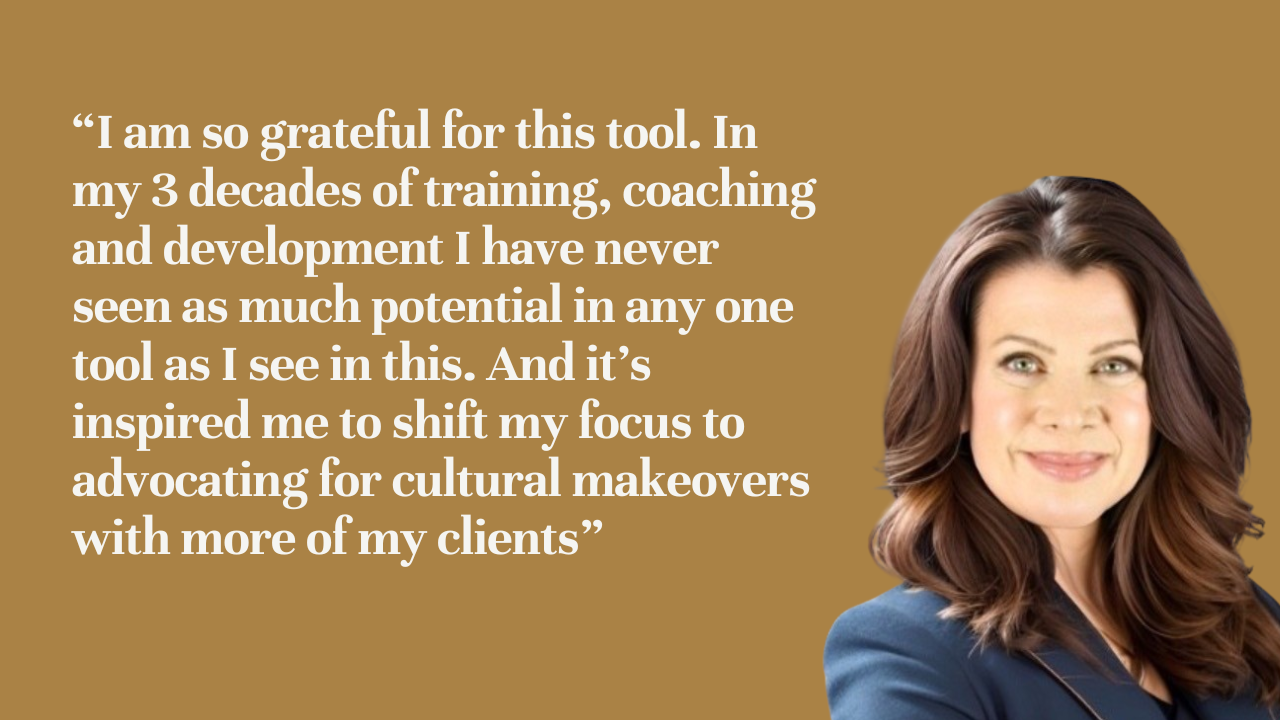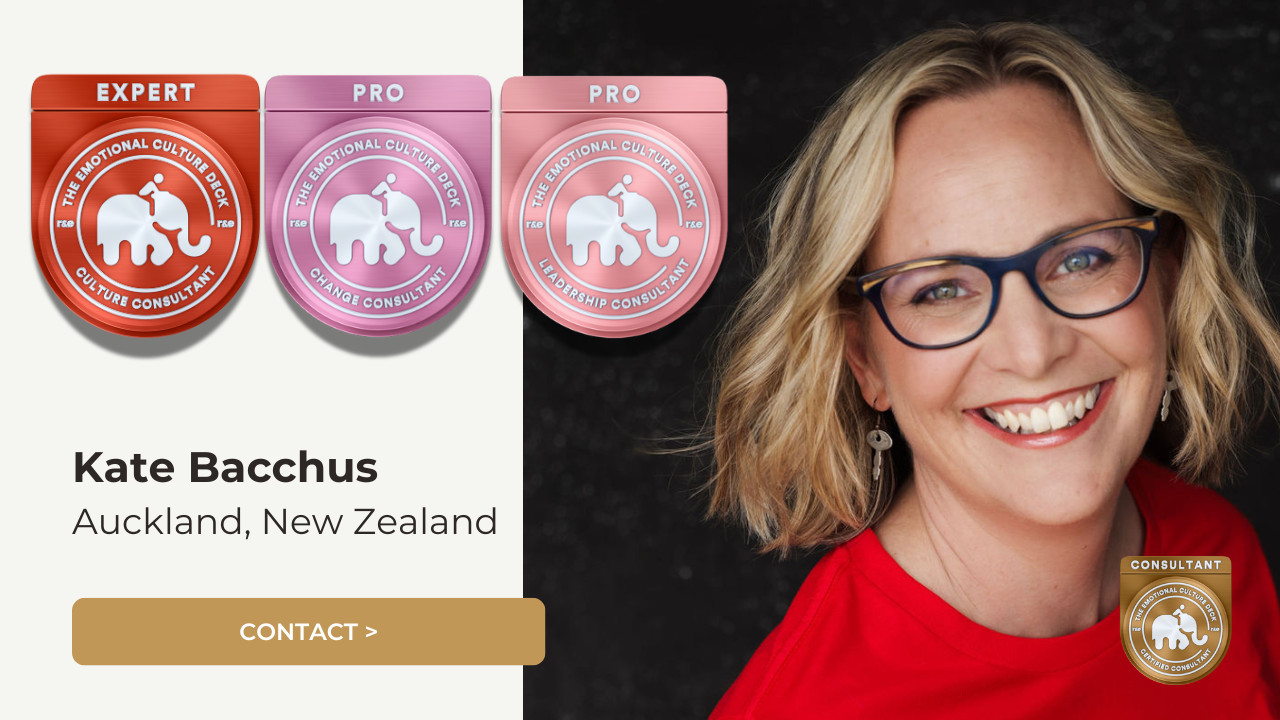From Resistance to Ritual. Building Emotional Leadership in a Male-Dominated Industry.
When Kristian Colegate, now General Manager of a large manufacturing and construction business, first picked up The Emotional Culture Deck, he wasn’t joining a culture initiative—he was starting one.
Over the past two years, Kristian has led one of the most deeply embedded and sustained applications of emotional culture we’ve seen, transforming a 17-site business of over 800 employees (within a wider group of up to 2000) from the inside out.
What Changed?
-
Leadership Behaviours shifted from command to compassion.
-
Safety Culture improved, with a 40% reduction in LTIs.
-
Retention & Engagement lifted in emotionally engaged teams.
-
Language like “vulnerability” and “intention” became normal.
-
Rituals & Practices were built into toolbox talks, stand-ups, and 1:1s.
And now? Kristian is no longer the sole driver. Branch managers are running emotional retros. His leaders are asking for ECD certifications. This work is becoming self-sustaining.
Below are highlights from his talk. The Q&A was packed with gold we couldn’t fit here and join our community to access the full replay and learn from Kristian’s journey.
The Starting Point? Cultural Resistance.
This wasn’t a company asking for emotional culture. It was a place marked by technical promotions, command-and-control habits, and emotional suppression. But Kristian and a courageous executive ally decided to start top-down, not bottom-up. They used The ECD as a Trojan horse—quietly but intentionally building a ripple of change through their senior leadership team.
Awkward First Steps → Strategic System Shift
Their first ECD workshop was… uncomfortable. Long silences. Awkwardness. But they stuck with it. Over time, they embedded emotional leadership into every layer—branch managers, safety practices, onboarding, change programs, even absenteeism campaigns. Emotional culture became the foundation for performance, safety, and leadership development.
What Changed?
- Leadership Behaviours shifted from command to compassion.
- Safety Culture improved, with a 40% reduction in LTIs.
- Retention & Engagement lifted in emotionally engaged teams.
- Language like “vulnerability” and “intention” became normal.
- Rituals & Practices were built into toolbox talks, stand-ups, and 1:1s.
And now? Kristian is no longer the sole driver. Branch managers are running emotional retros. His leaders are asking for ECD certifications. This work is becoming self-sustaining.
“Culture is lived, not laminated,” Kristian shared. “Start where you have influence. Let the deck do the work. Keep going.”
This is what it looks like when emotional culture stops being a workshop… and starts becoming a leadership system.

Kristian’s Key Insights & Lessons
1. Start Where You Have Influence
-
Kristian began with a simple check-in using The ECD with his GM.
-
It created an “aha” moment and emotional breakthrough that helped gain senior buy-in.
-
Their top-down approach was intentional due to low emotional readiness in the wider organisation.
2. From Resistance to Ripple Effect
-
Early workshops with the senior leadership team were awkward, silent, and emotionally unfamiliar.
-
Persistence paid off: over time, vulnerability, reflection, and shared language emerged.
-
Senior leaders began to model emotional culture, setting off a ripple through the business.
3. ECD as a Strategic Lever
-
Emotional culture was integrated into:
-
Induction and onboarding
-
Safety talks and toolbox sessions
-
Lean implementation
-
Performance reviews and leadership development
-
Change management via the ADKAR model
-
4. Emotional Culture Meets Safety (See more below)
-
Branch managers began linking absenteeism and safety incidents with emotions like disconnection and overwhelm.
-
Result: 40% drop in LTIs (lost time injuries), better hazard reporting, and stronger psychological safety.
5. Real Change Requires Real Leadership
-
Kristian spoke candidly about his own growth, acknowledging the anxiety, doubt, and emotional toll of leading this work.
-
He shared how ECD helped foster emotional literacy and regulation across the business.
-
One breakthrough moment: a senior leader admitted feeling alienated, unlocking honesty across the room.
6. Miro as an Integration Tool
-
Used Miro boards to track leadership canvases, rituals, and emotional reflections.
-
Teams now complete regular check-ins and monthly reflections using digital boards and physical rituals.
7. Embedding the Work Beyond One Person
-
Kristian was proud to share that emotional leadership is now driving itself.
-
His senior team has begun requesting training and certification to continue the work.
-
The goal: culture change that sustains even if he were to leave.
8. Personal Impact Beyond Work
-
Many male leaders reported unexpected improvements at home…better communication, emotional connection with partners and kids.
-
Kristian shared how The ECD helped him connect with his neurodiverse children and regulate his own emotions more constructively.
The Business Impact
Now to the question that always comes: Does this work make a difference to business performance?
“Well, the answer for us is yes it did. We’ve seen lower turnover in branches where the ECD is embedded. We’ve seen higher engagement in teams where leaders talk about emotion. Our safety reporting improved where emotional culture and climate was better integrated into pre starts and toolbox talks. We now treat emotional culture as a strategic performance lever. We measure it through retention, engagement, 360 survey feedback and leadership capability assessments.”
1. 40% reduction in LTIs (Lost Time Injuries)
Emotional culture practices led to fewer workplace injuries. A direct link between feelings and safety performance.
2. Improved safety reporting
More hazards were reported as leaders created emotionally safer environments (though the exact % isn’t specified, the trend is clear).
3. Increased retention in high-ECD branches
“We’ve seen lower turnover in branches where the ECD is embedded.”
4. Higher team engagement where leaders talk about emotion
This wasn’t anecdotal. They saw noticeable differences in engagement levels tied to emotional leadership practices.
5. Emotional culture now tracked through multiple systems
Including retention, 360 surveys, engagement metrics, and leadership capability assessments





